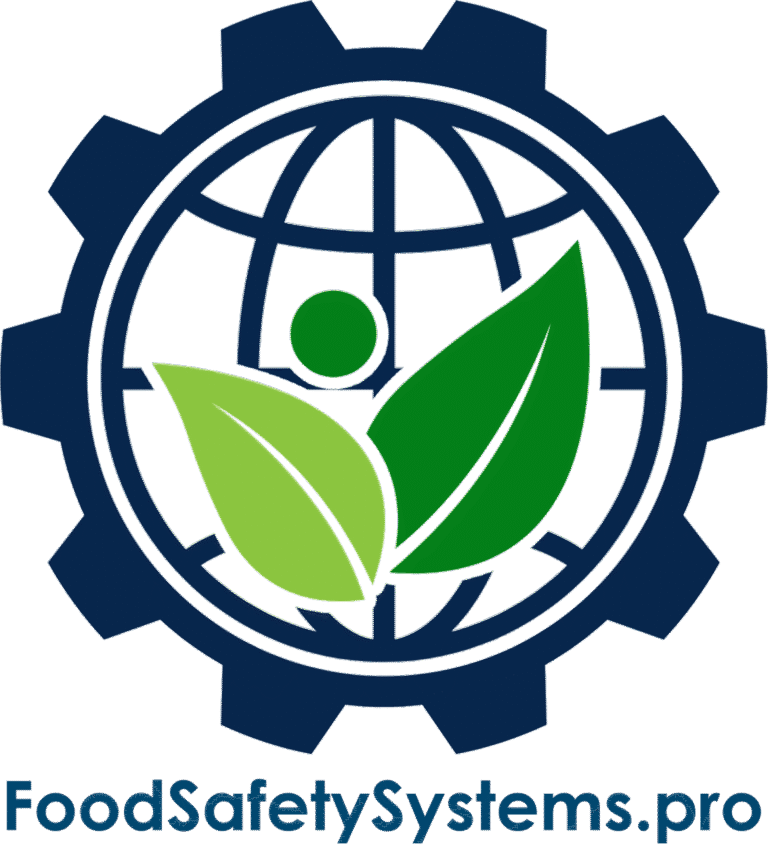Allergen Identification & Documentation
Compliance Article: SQF Module 2.7.1
Requirement Overview
SQF Code, Edition 9 – Module 2.7.1 requires:
“All allergens present in raw materials and finished products shall be identified, documented, and communicated throughout the supply chain.”
Key Compliance Objectives
✓ Complete allergen inventory for all ingredients
✓ Supplier documentation verification
✓ Clear finished product labeling
✓ Effective cross-contact prevention

Key Compliance Objectives
-
✓ Test and evaluate the recall and withdrawal process
✓ Validate the accuracy of traceability records
✓ Train staff to respond effectively during recalls
✓ Maintain documentation of each test and corrective actions
Step-by-Step Compliance Implementation
1. Create Allergen Inventory
-
Required Documentation:
-
• Raw Material Matrix (List all allergen-containing ingredients)
• Supplier-Declared Allergens (Certificates of Analysis)
• Processing Aids (Often overlooked sources)
FoodSafetySystems.pro Tools:
-
• Allergen Tracker (Auto-generates inventory)
• Hidden Allergen Scanner (Flags non-obvious sources)
Evidence Needed:
-
• Master allergen register
• Supplier documentation files
- • Raw Material Matrix (List all allergen-containing ingredients) • Supplier-Declared Allergens (Certificates of Analysis) • Processing Aids (Often overlooked sources)
- • Allergen Tracker (Auto-generates inventory) • Hidden Allergen Scanner (Flags non-obvious sources)
- • Master allergen register • Supplier documentation files
2. Implement Supplier Verification
-
Critical Checks:
-
• Certificate of Analysis (COA) Review (Per shipment)
• On-Site Audits (For high-risk suppliers)
• Mass Balance Verification (For bulk ingredients)
FoodSafetySystems.pro Support:
-
• Digital COA Portal (Auto-flags discrepancies)
• Supplier Risk Scoring System
Evidence Needed:
-
• Approved supplier checklist
• Non-conformance reports
- • Certificate of Analysis (COA) Review (Per shipment) • On-Site Audits (For high-risk suppliers) • Mass Balance Verification (For bulk ingredients)
- • Digital COA Portal (Auto-flags discrepancies) • Supplier Risk Scoring System
- • Approved supplier checklist • Non-conformance reports
3. Finished Product Labeling
-
Label Requirements:
-
• Declared Allergens (Bold or highlighted)
• Advisory Statements (If shared equipment used)
• Multilingual Warnings (For export markets)
FoodSafetySystems.pro Solutions:
-
• Label Review AI (Checks 50+ global regulations)
• Artwork Version Control
Evidence Needed:
-
• Approved label files
• Regulatory compliance certificates
- • Declared Allergens (Bold or highlighted) • Advisory Statements (If shared equipment used) • Multilingual Warnings (For export markets)
- • Label Review AI (Checks 50+ global regulations) • Artwork Version Control
- • Approved label files • Regulatory compliance certificates
4. Cross-Contact Prevention
-
Control Measures:
Risk Area
Mitigation Strategy
Storage
Dedicated allergen zones, sealed containers
Scheduling
Allergen runs at end of day
Cleaning
Validated allergen cleanup protocols
Rework
Strict allergen-containing rework controls
FoodSafetySystems.pro Solutions:
-
• Allergen Cleanup Validator
• Production Scheduling Optimizer
Evidence Needed:
-
• Swab test results
• Cleaning verification logs
| Risk Area | Mitigation Strategy |
|---|---|
| Storage | Dedicated allergen zones, sealed containers |
| Scheduling | Allergen runs at end of day |
| Cleaning | Validated allergen cleanup protocols |
| Rework | Strict allergen-containing rework controls |
- • Allergen Cleanup Validator • Production Scheduling Optimizer
- • Swab test results • Cleaning verification logs
Common Audit Findings & Recommended Fixes
| Non-Conformance | FoodSafetySystems.pro |
|---|---|
| "Undocumented allergens" | Ingredient Deep-Dive Service |
| "Inadequate supplier docs" | Document Gap Analyzer |
| "Labeling errors" | Instant Label Checker |
| "Ineffective cleaning" | Allergen Swab Test Kit |
Auditor Verification Checklist
Auditors will typically:
-
• Review allergen inventory
• Check supplier documentation
• Inspect labels randomly
• Verify cleaning records
FoodSafetySystems.pro Tools:
-
• Allergen Audit SimulatorTools:
• Mock Documentation Request Set
Implementation Roadmap
Build Your Program
-
✓ Launch Allergen Tracker
✓ Schedule Supplier Data Review
Train and Validate
-
✓ Conduct Allergen Awareness Certification
✓ Implement Cross-Contact Drills
Operate and Monitor
-
✓ Monthly Label Audits
✓ Quarterly Supplier Reviews
Improve Continuously
-
✓ Annual Program Revalidation
✓ Bi-annual Regulatory Updates
Why This Matters?
Robust allergen control:
-
✓ Prevents life-threatening reactions
✓ Avoids costly recalls
✓ Meets global regulations
✓ Builds consumer trust
"SQFServices.pro transforms allergen management from risk mitigation to brand protection."
Privacy Policy | Terms of Service | Disclaimer
Powered by Consultare Inc. Group, A Compliance Company







